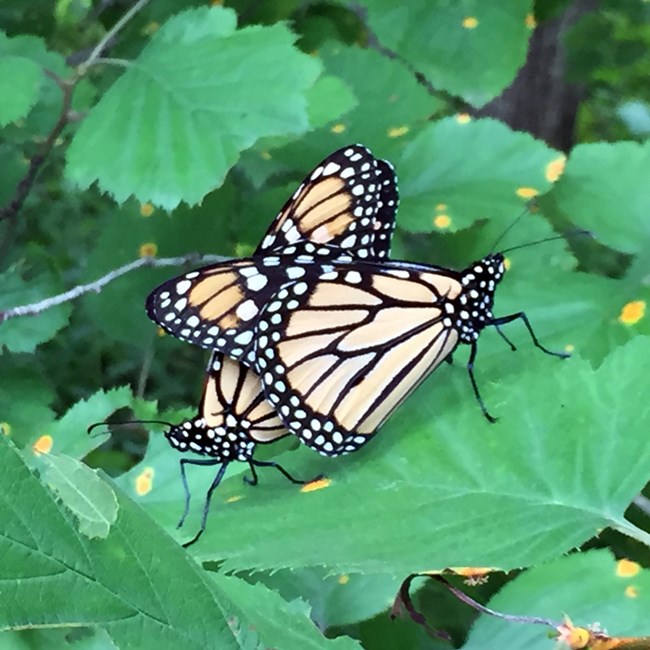
Common and Binomial Name:Monarch Butterfly (Danaus plexippus) Description:A very distinctive species, only to be confused with the Viceroy butterfly. The Monarch Butterfly wingspan ranges from 3 ½ to 4 inches. The wings are orange with black veins extending to the edges of the wings. Two series of white spots are within the black ends of the wings. They fly very slowly for a winged species, only moving at an average of 5.5 mph. The monarch has 6 legs, but only uses its middle and hind legs as the front legs are pinned to its body and are vestigial.
Range:Monarchs are found all over the world, through Southern Canada, across the United States, into Central America, and Northern South America. They can be found in Cuba, and other Caribbean Islands, across the Pacific Islands on the Solomon Islands, and New Caledonia, and throughout the Atlantic islands in the Azores, and the Canary Islands. Habitat:Warm areas with flowering plants, and suitable roosting vegetation. The caterpillars can be found on the underside of milkweed leaves. Threats:Habitat loss of overwintering areas in Mexico. Lack of milkweed for their caterpillars. 
Diet:Monarchs consume the nectar from Echinacea species, Asters, Milkweeds, Blazing Stars, Goldenrods, and many other flowering plants. When caterpillars they only consume milkweed leaves. Conservation Status:According to the NatureServe conservation status they are “Apparently Secure”. Where to Find at the Indiana Dunes National Park:They can be found throughout the park but especially in open grasslands with abundant wildflowers (Monoke prairie) and savannas (Paul H. Douglas Trail). ❤ Support your park.Donate to the Indiana Dunes National Park. Donations will be used to fund maintenance projects and enhance activities at the park. |
Last updated: April 1, 2021
